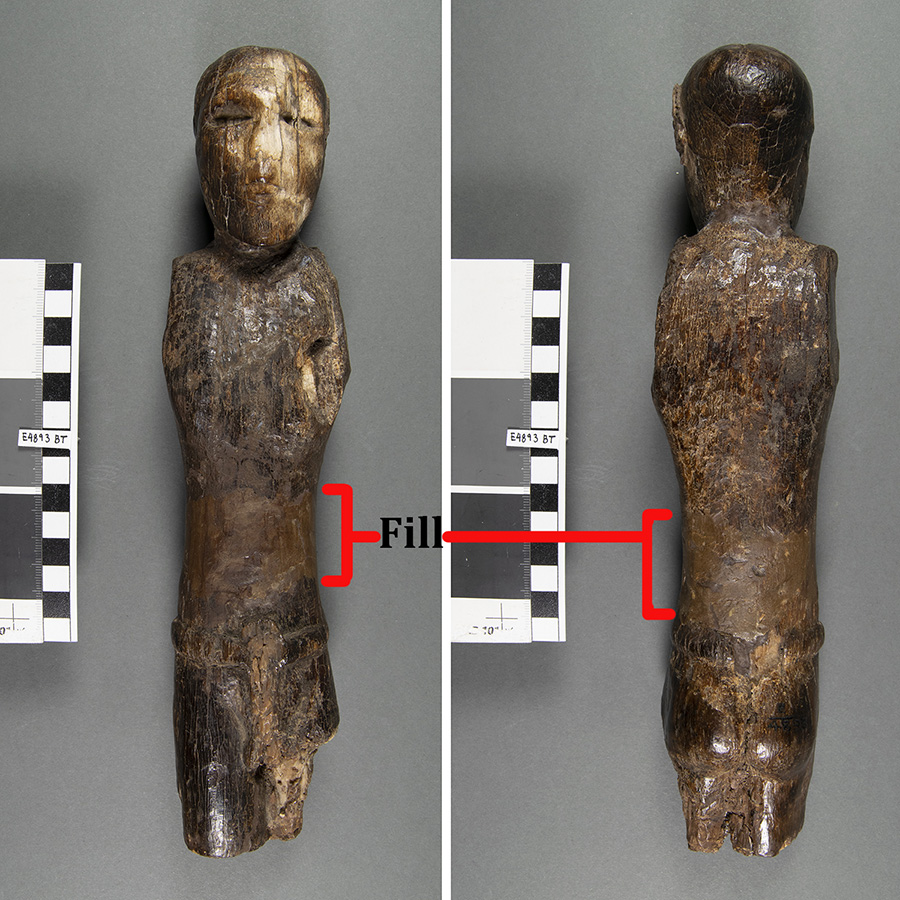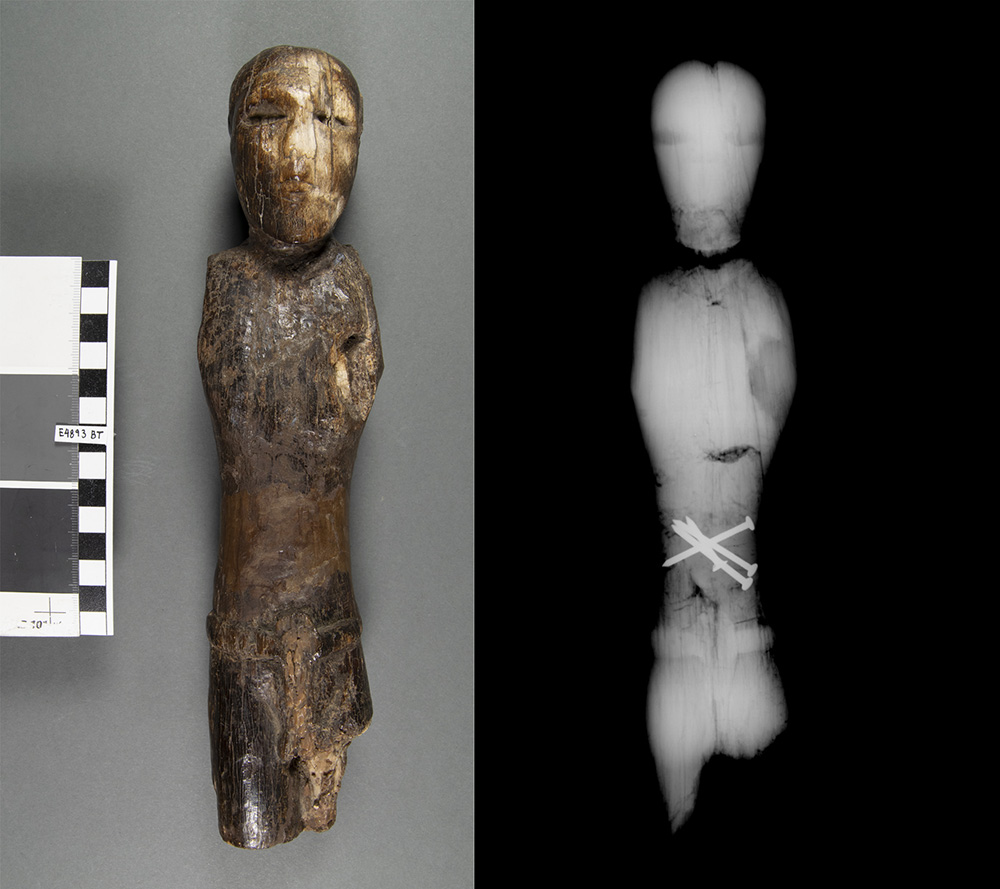An Ivory Figure from Hierakonpolis
By Tessa de Alarcon
The figure you see here, E4893, is an ivory statuette from the site of Hierakonpolis that I am working on as part of an IMLS grant funded project. I have just started the treatment, but thought I would give a brief run through of the initial examination since this is a good example of when and why we use X-radiography in our department to evaluate the condition of objects before treatment.

You may have noticed that the middle of this object is fill, so not part of the object. The fill has some cracks and splits that suggests it is unstable and should be removed. There is no written documentation for when this fill was done or by who, but it's possible that this was done shortly after it was excavated. The object was accessioned in 1898. Given that the conservation lab at the Penn Museum was not founded until 1966 that leaves a big gap for the possibilities for when this treatment might have been done.

Based on previous experience, I often worry with these old fills that there are unseen things, like metal pins or dowels, lurking below the surface. X-radiography is a great way to check for these types of hidden previous treatment issues. Though in this case, what I found when I X-rayed the object was not your typical pin or dowel.

Here in the X-ray you can see what I found: while this fill did not have any pins or dowels, whoever had done this treatment had decided to reinforce it by putting nails (4 in total) into the fill material. While this makes the figure look like he has eaten a bunch of nails, it is in some ways better news than a pin would be. Pins usually go into the original material, and if they are iron, can rust and expand causing damage to the object. Pin removal can also be risky and lead to damage of the object especially if the pin is deeply imbedded or corroded into place. These nails, on the other hand, appear to be only in the fill and do not look like they go into the original material of the object at all. This suggests that removal of the fill and the nails should be possible without damaging the object. As this treatment progresses, I will follow up with additional posts and updates.
This project was made possible in part by the Institute of Museum and Library Services
-- Sent from my Linux system.
No comments:
Post a Comment